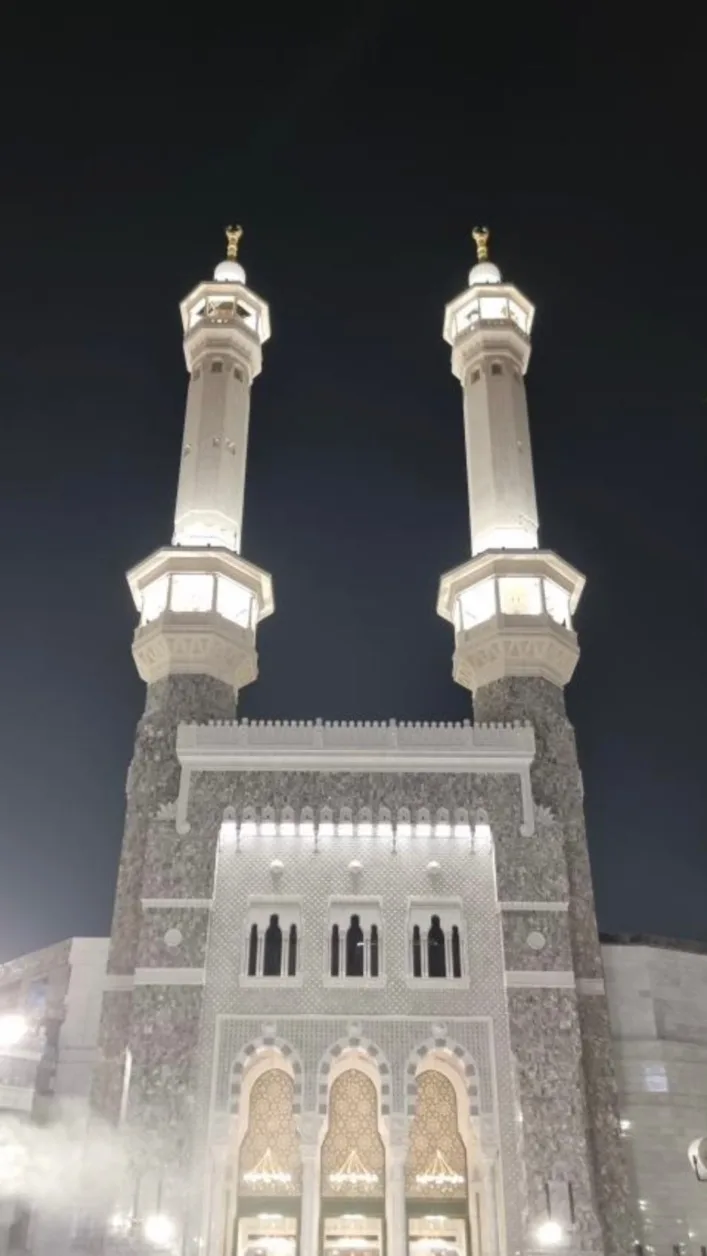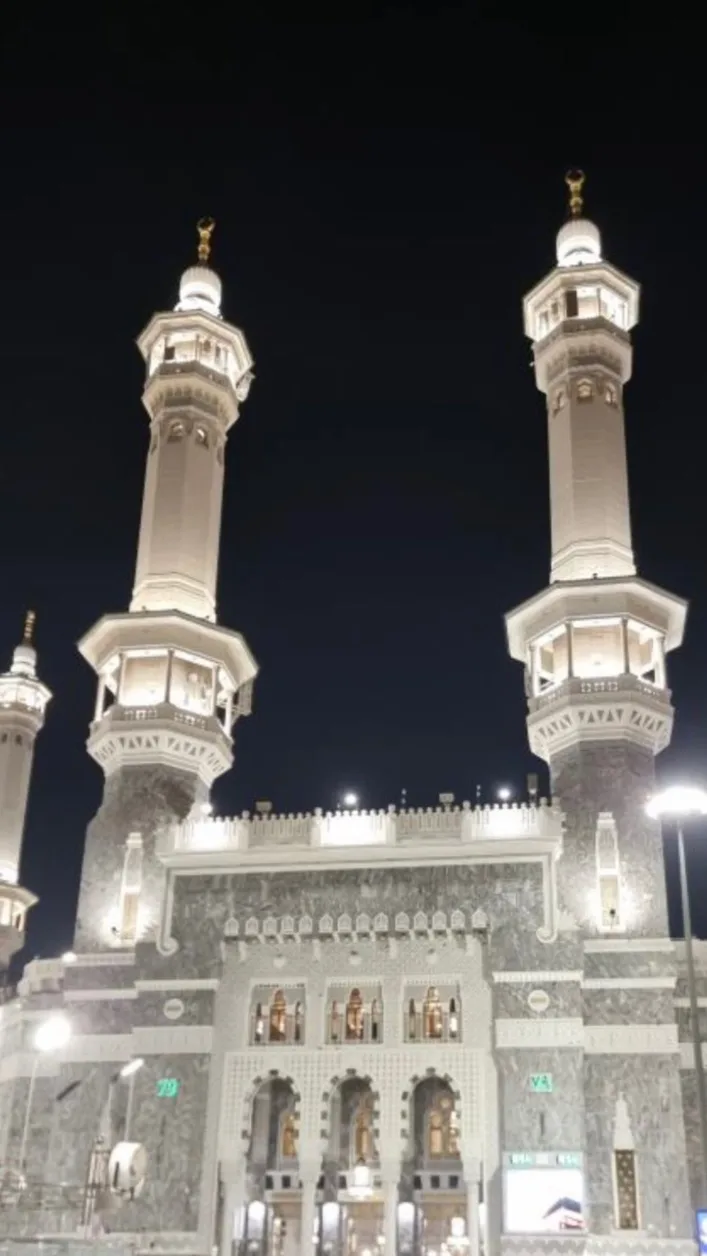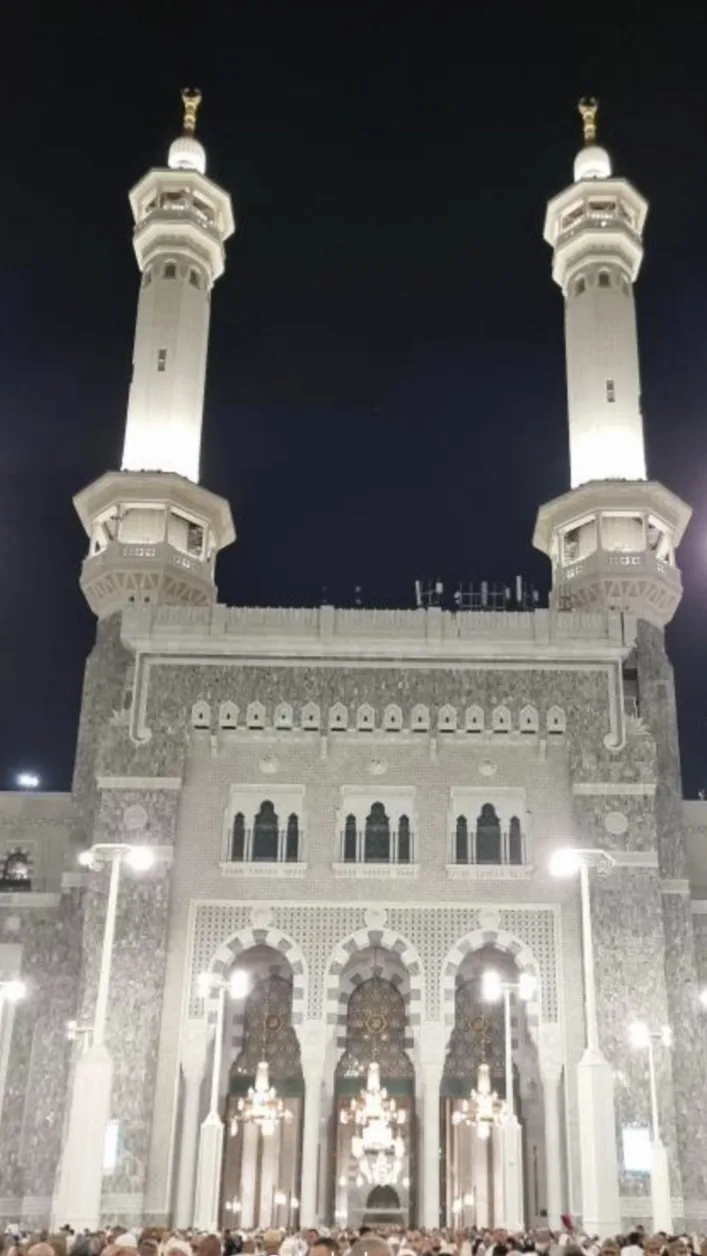Masjid Al Haram, the Grand Mosque surrounding the Kaaba in Makkah, welcomes millions of pilgrims annually through its numerous entrances.
First-time visitors often find themselves overwhelmed when trying to locate specific entry points. However, there exists a simple architectural feature that distinguishes the five main gates from the others: the presence of twin minarets towering above each main entrance.
Full Name List of Gates at Grand Mosque in Mecca
- Gate 1 – Bab As-Salam
- Gate 2 – Bab e Abu Bakr
- Gate 3 – Bab ur Rahman
- Gate 4 – Hijrah Gate
- Gate 5 – Bab e Quba
- Gate 6 – Gate 6 of Masjid Al Nabawi
- Gate 7 – King Saud Gate
- Gate 8 – King Saud Gate
- Gate 9 – King Saud Gate
- Gate 10 – Imam Bukhari Gate
- Gate 11 – Bab Ul Aqiq
- Gate 12 – Bab e Sultan Abdul Majeed
- Gate 13 – Bab e Sultan Abdul Majeed
- Gate 14 – Bab e Sultan Abdul Majeed
- Gate 16 – Bab Umar Ibn Khattab
- Gate 17 – Bab Umar Ibn Khattab
- Gate 18 – Bab Umar Ibn Khattab
- Gate 19 – Bab Badr
- Gate 20 – Bab King Fahad
- Gate 21 – Bab King Fahad
- Gate 22 – Bab King Fahad
- Gate 23 – Bab Ohad
- Gate 24 – Ban Uthman Bin Affan
- Gate 25 – Ban Uthman Bin Affan
- Gate 26 – Ban Uthman Bin Affan
- Gate 28 – Bab Ali Ibn Abi Talib
- Gate 29 – Bab Ali Ibn Abi Talib
- Gate 30 – Bab Ali Ibn Abi Talib
- Gate 31 – Bab Abu Zar Ghaffari
- Gate 32 – Bab Abu Zar Ghaffari
- Gate 33 – Bab e Abdul Aziz
- Gate 34 – Bab e Abdul Aziz
- Gate 35 – Bab e Abdul Aziz
- Gate 36 – Gate 36 of Masjid Al Nabawi
- Gate 37 – Bab e Makkah
- Gate 38 – Bab Bilal
- Gate 39 – Bab Un Nisa
- Gate 41 – Bab Ul Baqi
- Gate 42 – Bab Al Aiymah
- Gate 44 – Bab e Jibreel
5 Main Gates of Grand Mosque in Mecca
King Abdul Aziz Gate (Gate 1)

The King Abdul Aziz Gate, marked as Gate 1, stands as the primary entrance to Masjid Al Haram. Located on the western side of the complex, this monumental gate serves as the main reference point from which all other gates are numbered. Its twin minarets rise prominently above the entrance, visible from considerable distances throughout Makkah’s central district.
- Two minarets at King Abdulaziz Gate are 137 meters tall.
Named after the founder of modern Saudi Arabia, this gate features expansive corridors and ramps that accommodate thousands of worshipers simultaneously.
Its strategic location near the Ajyad district makes it particularly accessible for pilgrims staying in western Makkah, and it serves as a key entry point during the Umrah ritual when pilgrims enter to perform Tawaf.
Bab Al Fath (Gate 45)

Bab Al Fath, or the Gate of Victory, is distinguished by its twin minarets on the northern side of the mosque. As Gate 45, it represents a significant entry point for pilgrims approaching from the Al-Ghassalah and Al-Shamiyyah neighborhoods. The name “Al Fath” commemorates the peaceful conquest of Makkah during the Prophet Muhammad’s lifetime.
- Two minarets at Bab al-Fath are 137 meters tall.
This gate is particularly notable for its proximity to the Sa’i path between Safa and Marwa, making it convenient for pilgrims completing this ritual. During less crowded periods, many worshippers prefer this entrance for its relatively smoother flow of pedestrian traffic compared to other main gates.
Bab Al Umrah (Gate 62)

Located on the western perimeter, Bab Al Umrah (Gate 62) is particularly significant for pilgrims who have just completed their Ihram and are entering to perform Umrah rituals. Its twin minarets serve as beacons for pilgrims approaching from Masjid Al Tan’eem, where many assume their Ihram state.
- Two minaret at Bab Al-Umrah are 137 meters tall.
The gate derives its name from its traditional use as the primary entrance for Umrah performers. Its wide corridors and designated pathways help organize the flow of visitors, many of whom enter with the intention of proceeding directly to the Kaaba for Tawaf. During Ramadan, this gate sees particularly heavy traffic in the evenings as worshipers arrive for Taraweeh prayers.
King Fahad Gate (Gate 79)

The King Fahad Gate, numbered as Gate 79, stands prominently on the southern side of Masjid Al Haram. Named after King Fahad bin Abdulaziz, during whose reign significant expansions of the mosque were completed, this entrance is marked by its imposing twin minarets visible throughout southern Makkah.
- Two minarets at King Fahd Gate are 98 meters tall.
This gate is strategically positioned to serve pilgrims arriving from the Misfalah and Ajyad neighborhoods. Its massive escalators and elevators make it particularly accessible for elderly and disabled visitors. The king’s name reflects the gate’s grandeur, as it features extensive marble work and calligraphy that exemplifies the finest Islamic architectural traditions.
King Abdullah Gate (Gate 100)

Completing the circle of main entrances is the King Abdullah Gate, designated as Gate 100. Added during the expansions initiated under King Abdullah bin Abdulaziz’s reign, this relatively newer addition is distinguished by its contemporary yet harmonious architectural style.
- Two minarets at King Abdullah Gate are 135 meters tall.
Located on the northeastern quadrant of the mosque, this gate serves as a major access point for pilgrims staying in the rapidly developing Al-Shamiyyah district. The gate’s design incorporates advanced cooling systems and crowd management features, reflecting the kingdom’s commitment to enhancing the pilgrim experience through modern innovations.
For first-time visitors to Masjid Al Haram, identifying these main gates can substantially improve navigation around the vast complex. Pilgrims are advised to use these gates as reference points when planning meeting locations or determining exit strategies after prayers. The numbering system (1, 45, 62, 79, and 100) follows a counterclockwise sequence around the mosque, helping visitors maintain their bearings.


 WhatsApp Channel
WhatsApp Channel
 Instagram
Instagram
 Facebook
Facebook
 X (Twitter)
X (Twitter)
 Google News
Google News